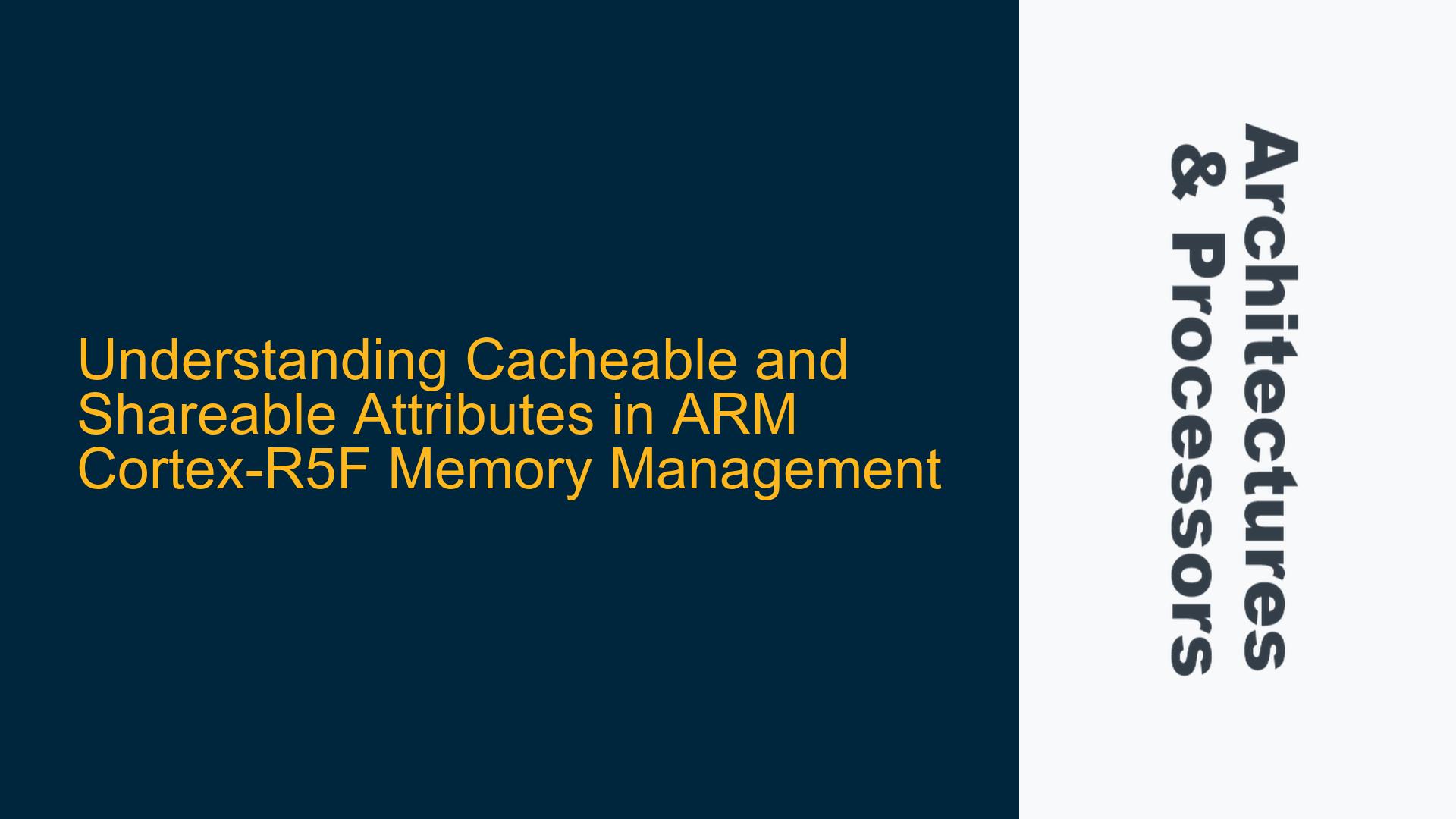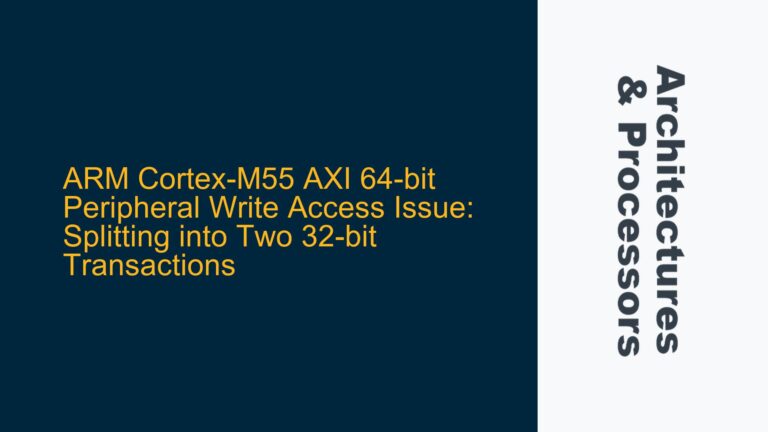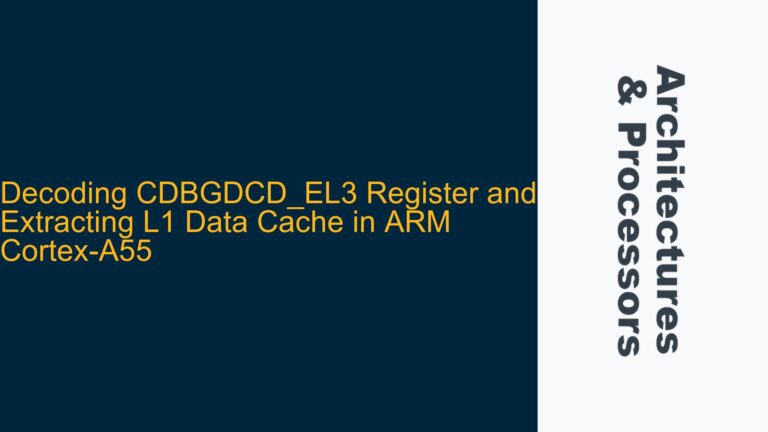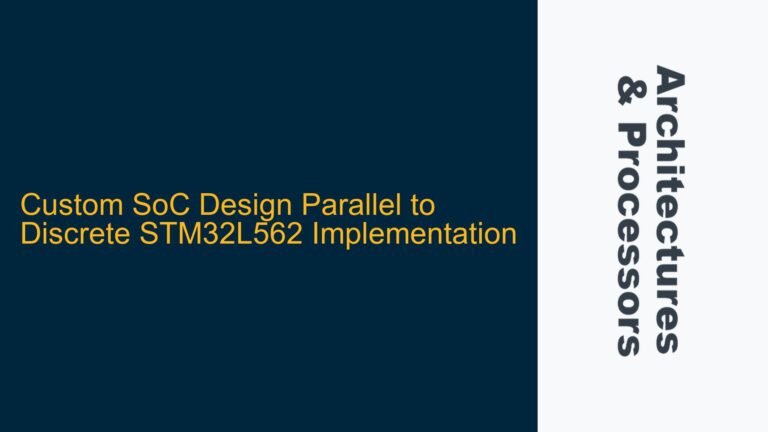Cacheable and Shareable Attributes in ARM Cortex-R5F: A Deep Dive
The ARM Cortex-R5F processor, based on the ARMv7 architecture, is widely used in real-time embedded systems due to its deterministic performance and efficient memory management capabilities. One of the critical aspects of memory management in ARM processors is the configuration of memory attributes, specifically the Cacheable and Shareable attributes. These attributes dictate how the processor interacts with memory, particularly in multi-core or multi-master systems where memory coherency and sharing are paramount. Misconfiguring these attributes can lead to subtle bugs, performance bottlenecks, or even system failures. This post provides a comprehensive analysis of the Cacheable and Shareable attributes, their interactions, and their implications for the Cortex-R5F.
Cacheable and Shareable Attributes: Definitions and Implications
Cacheable Attribute
The Cacheable attribute is a memory property that determines whether a memory region can be cached by the processor. When a memory region is marked as Cacheable, the processor is permitted to store copies of data from that region in its cache. This can significantly improve performance by reducing access latency and minimizing bus traffic. However, caching introduces complexity in systems where multiple agents (e.g., CPUs, DMA controllers) access the same memory region, as cached data may become stale or inconsistent.
Key points about the Cacheable attribute:
- It is a permission, not a mandate. The processor may choose not to cache a region even if it is marked as Cacheable.
- Caching is beneficial for frequently accessed data but can be detrimental for memory-mapped I/O or shared memory regions where coherency is critical.
- In the Cortex-R5F, caching is managed at the level of the L1 cache, as the R5F does not include an L2 cache.
Shareable Attribute
The Shareable attribute indicates whether a memory region is accessed by multiple agents in the system. When a region is marked as Shareable, the processor assumes that other agents (e.g., other CPUs, DMA controllers) may access the same memory location. This attribute is crucial for maintaining memory coherency in multi-core or multi-master systems.
Key points about the Shareable attribute:
- It informs the processor about the need to maintain a coherent view of memory across all agents.
- In systems with hardware coherency support (e.g., Cortex-A series), the Shareable attribute triggers coherency mechanisms such as snooping or cache-to-cache transfers.
- In systems without hardware coherency support (e.g., Cortex-R5F), the Shareable attribute has limited utility, as the processor cannot enforce coherency automatically.
Interaction Between Cacheable and Shareable Attributes
The Cacheable and Shareable attributes are not independent; their interaction determines how the processor handles memory access and coherency. The Cortex-R5F, lacking hardware coherency support, exhibits specific behaviors based on these attributes:
-
Cacheable = 0 and Shareable = x
When a memory region is marked as non-Cacheable, the Shareable attribute becomes irrelevant. Since the data is not cached, there is no risk of coherency issues, regardless of whether other agents access the region. The processor always fetches data directly from memory, ensuring a consistent view for all agents. -
Cacheable = 1 and Shareable = 0
A Cacheable, non-Shareable region implies that the data is cached, and no other agents will access it. The processor assumes sole responsibility for the region, allowing it to cache data without worrying about coherency. This configuration is ideal for private data used exclusively by a single CPU core. -
Cacheable = 1 and Shareable = 1
A Cacheable, Shareable region indicates that the data is cached and may be accessed by other agents. In processors with hardware coherency support (e.g., Cortex-A9), this triggers coherency mechanisms to ensure all agents see a consistent view of memory. However, the Cortex-R5F lacks such mechanisms. As a result, the processor cannot cache the data, as it cannot guarantee coherency. Instead, it treats the region as non-Cacheable, fetching data directly from memory. -
Cacheable = 0 and Shareable = 0
A non-Cacheable, non-Shareable region is treated as private memory that is not cached and not shared. This configuration is typically used for memory-mapped I/O or regions where coherency is managed explicitly by software.
Cortex-R5F Memory Coherency Challenges and Limitations
The Cortex-R5F, designed for real-time applications, prioritizes determinism over complex coherency mechanisms. Unlike the Cortex-A series, which includes hardware coherency support, the R5F relies on software to manage coherency for shared memory regions. This design choice simplifies the hardware but places additional responsibility on software developers.
Lack of Hardware Coherency Support
The Cortex-R5F does not include a snoop control unit (SCU) or other hardware mechanisms to enforce coherency. As a result, when a memory region is marked as Cacheable and Shareable, the processor cannot cache the data, as it cannot guarantee that other agents will see the most up-to-date version. Instead, it bypasses the cache, fetching data directly from memory. This behavior ensures coherency but sacrifices the performance benefits of caching.
Software-Managed Coherency
In the absence of hardware coherency support, software must explicitly manage coherency for shared memory regions. This typically involves:
- Using memory barriers to ensure that memory operations are performed in the correct order.
- Invalidating or cleaning cache lines to ensure that the most recent data is available in memory.
- Avoiding caching for shared memory regions altogether, relying on non-Cacheable configurations.
Performance Implications
The inability to cache shared memory regions can significantly impact performance, particularly in systems with high inter-core communication or frequent DMA transfers. Developers must carefully balance the need for coherency with the performance benefits of caching, often resorting to software-based optimizations to mitigate the overhead.
Best Practices for Configuring Cacheable and Shareable Attributes in Cortex-R5F
To ensure optimal performance and coherency in Cortex-R5F-based systems, developers should adhere to the following best practices when configuring memory attributes:
Use Non-Cacheable Regions for Shared Memory
For memory regions shared between multiple agents (e.g., CPUs, DMA controllers), mark the region as non-Cacheable (Cacheable = 0). This ensures that all agents access the most up-to-date data directly from memory, avoiding coherency issues. While this approach sacrifices the performance benefits of caching, it simplifies coherency management and reduces the risk of subtle bugs.
Reserve Caching for Private Data
Mark private memory regions (e.g., stack, heap) as Cacheable and non-Shareable (Cacheable = 1, Shareable = 0). This allows the processor to cache the data, improving performance without introducing coherency concerns.
Avoid Cacheable, Shareable Configurations
In the Cortex-R5F, marking a region as Cacheable and Shareable (Cacheable = 1, Shareable = 1) is counterproductive. The processor cannot cache the data due to the lack of hardware coherency support, resulting in the same behavior as a non-Cacheable region. Instead, use non-Cacheable configurations for shared memory and rely on software-based coherency management.
Implement Software Coherency Mechanisms
For systems requiring shared memory with caching, implement software-based coherency mechanisms. This may include:
- Using data synchronization barriers (DSB) and instruction synchronization barriers (ISB) to enforce memory operation ordering.
- Explicitly invalidating or cleaning cache lines before and after accessing shared memory.
- Employing custom protocols to ensure that all agents access shared memory in a coordinated manner.
Leverage MPU Configuration
The Cortex-R5F includes a memory protection unit (MPU) that can be used to define memory regions and their attributes. Carefully configure the MPU to enforce the desired Cacheable and Shareable settings, ensuring that memory access patterns align with system requirements.
Conclusion
The Cacheable and Shareable attributes play a critical role in memory management for ARM Cortex-R5F processors. Understanding their interaction and implications is essential for designing efficient and reliable embedded systems. While the Cortex-R5F’s lack of hardware coherency support presents challenges, careful configuration of memory attributes and the use of software-based coherency mechanisms can mitigate these issues. By adhering to best practices and leveraging the MPU, developers can optimize performance and ensure coherency in multi-core or multi-master systems.






